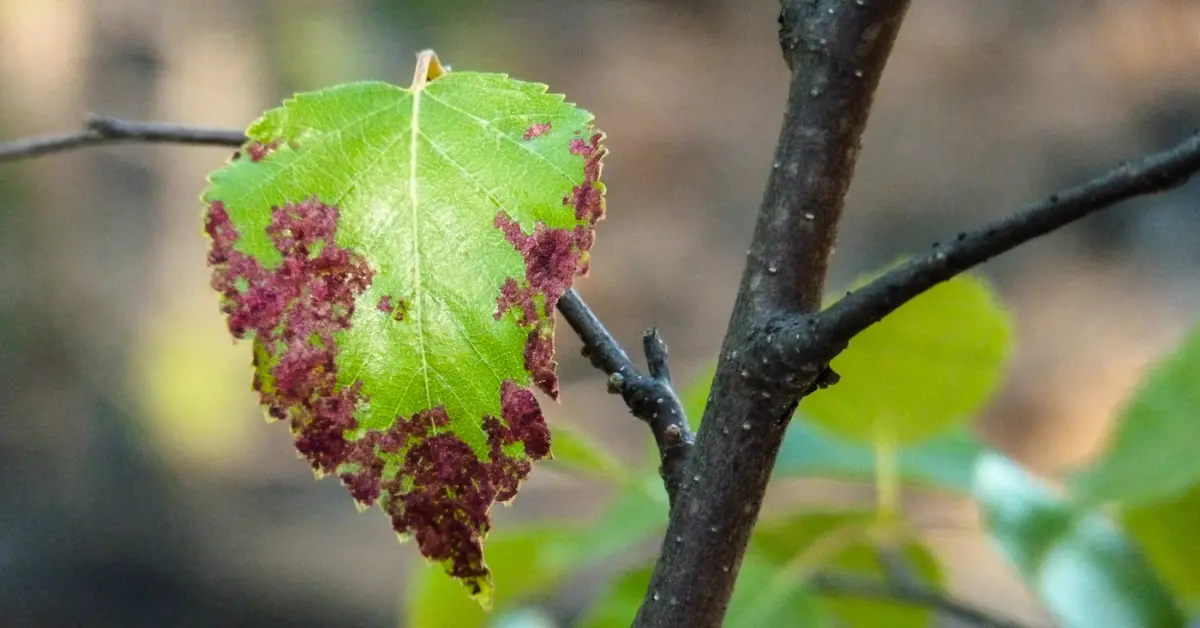Trees contribute to the overall aesthetic of your landscape, but they also serve much larger purposes to our planet and overall eco-system. Recognizing the symptoms of common tree diseases early could be the best way to prevent your trees from dying.
How do I know if I have a diseased tree?
There are a few ways to recognize a diseased tree, and most will be fairly obvious for any homeowner who spends time out in their yard. Keep an eye out for these signs that indicate your trees could be in trouble:
- Leaf discoloration: This could be harder to spot in fall as leaves are changing colors, but continually discolored leaves could be a warning sign of a deeper issue.
- Bark abnormalities: Deep cracks, holes, and white spots can be an indication that the tree is dying.
- Dead branches: Bark abnormalities such as holes and cracks can lead to broken and dying branches. Dying branches are dry and will break more easily than healthy branches.
- Decay; Mushrooms are a clear sign of fungal growth and soft or crumbling wood is another red flag to look out for.
3 Common Tree Diseases in North Texas
Oak Wilt
- What does it look like? Oak wilt commonly starts at the top of the tree as leaves wilt and turn brown very quickly. If left untreated, the tree could die.
- How does it happen? This disease can be spread from tree to tree by the roots of an infected tree, but it can also be spread by nitidulid beetles as they move from tree to tree to eat the fungus.
- What trees does it affect? As you can likely guess, oak wilt affects oak trees of all variations, however red and live oaks are more susceptible than other species.
Fire Blight
- What does it look like? Fire blight is named for its appearance—leaves will look blackened and burned as they wilt. This disease can infect twigs sporadically, so you could have multiple infected areas of a tree at the same time.
- How does it happen? Fire blight is caused by a bacteria infection. Sometimes cankers will form on the tree—these cankers will protect the bacteria during colder winter months and will wait until warm spring weather to release the bacteria again.
- What trees does it affect? Fruit trees are particularly at-risk for fire blight. The removal and destruction of infected branches can help to control this disease.
Hypoxylon Canker
- What does it look like? There are a few symptoms of hypoxylon canker: branch dieback (leafless and dead branches), sapwood decay, peeling bark, and dark-colored spores on the bark itself. Serious infections can appear as an open wound on the trunk of the tree.
- How does it happen? The canker is actually a secondary issue. Physical damage to the tree or drought are quick paths to an infection. Once there’s an opening in the form of this damage, the fungus can infect the tree and will live off the nutrients the tree provides, eventually leading to the death of the tree.
- What trees does it affect? There are a few variations of canker diseases that affect different species of trees—the hypoxylon canker commonly affects oak, aspen, and sycamore trees.
Services For Sick Trees
Purple Care has the training and experience to accurately diagnose the issue and provide the Fort Worth tree services needed to bring them back to health. Whether the problem is caused by pests or a potential disease, we can recommend the best steps to take to restore the health of your trees. Contact the Purple Pros online or by phone at (817) 880-6052!




Comments (0)
Thanks for your comment!
Thanks for your feedback! Your comments have been successfully submitted! Please note, all comments require admin approval prior to display.
Error submitting comment!
There is a problem with your comment, please see below and try again.